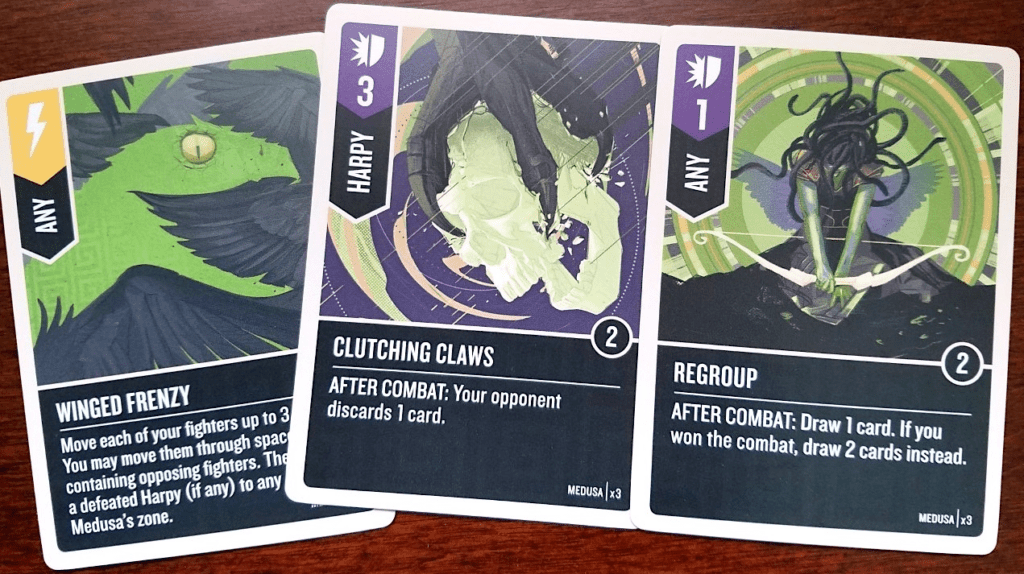For this critical play, I played a game called Unmatched which is a tabletop game published by Restoration Games. It is available as a physical board game and online through TTS (Tabletop Simulator). I played this game online through TTS for this assignment. This game is intended for 2-4 players and can be played by anyone old enough to read cards and be able to sit through a full game. The theme of Unmatched is that it takes characters from popular culture (Dracula, Robin Hood, Marvel characters, Jurassic Park characters, etc.) and pits them against each other, so it is most enjoyable for audiences of age 10+, since they will understand many of the references. For each player, they randomly draw 5 cards at the start of the game, and as the play goes on, they continue to randomly draw cards when needed. This game can be quite addicting because it balances chance with a bit of skill, meaning that more experienced players can still lose to new players based on the cards they draw throughout the game, and players of the same level can draw crucial cards at important moments to turn the tide of the game. The combination of randomly drawn cards with learning how to best utilize them for each situation makes it similar to other games of chance such as Poker in terms of general strategy, while adding in additional elements such as a physical board where the players move their piece and combat where each player’s luck is truly put to the test in 1 on 1 battles.
In Unmatched, you can choose one character to play as for the match. These characters are pulled from popular culture and each have their own decks of around 30 cards that are designed around the character. Within this deck, there is usually about 12 cards that are shared amongst all decks (i.e. Feints which block all effects from an opponent’s card, Regroup which allows you to draw 2 cards if you won combat and 1 otherwise), and the rest are unique cards to that character. This means that in a perfect game, you are able to get cards in sequence that allow you to pull off combinations and deal huge blows to the opponent. On the other hand, in a worst case scenario, you may end up with all attack cards in the beginning of the match, making you unable to defend against any attack from the opponent. Because of this, luck and chance are huge aspects to the game.

One of the most addicting aspects of this game is that at any moment, you are able to come back from the game with the right draws. Even an experienced player cannot defend against a player that doesn’t know what they’re doing if their card luck turns out to be bad. Compared to games such as Mafia or Catan, which each incorporates probability and chance in their own way, this game can feel much more luck-based than skill-based. Although smart players can make do with the cards they have, at certain points, there is nothing you can do but wait for the right cards to be drawn. Additionally, since there are only 30 cards involved per player, there is less “macro” gameplay involved in that to stall for time, players are forced to either continue running away or to try and “hit-and-run” the opponent and hope that they don’t have a cancelling effect.
One interesting thing I noticed while playing this game with friends is that when they win, they tend to claim that it was all strategy, while when they lose or are losing, they say it was all luck. I think this highlights an important aspect of randomness and chance in games, in that most addicting games have a unique balance of risk vs. reward in that the reward is so large that the risk feels less risky. For instance, in casino games where the player has no control over the outcome, the reward of several thousands or millions seem to outweigh the risks that come with it. In board games such as Unmatched, although there is not a huge prize pool as compensation, the rush of being able to claim that you outsmarted your friends in a game of strategy is enough of a motivator to keep players hooked. Additionally, the aspect of probability and randomness feeds into the addiction as you could play 10 games with the same characters and have a completely different outcome each game. In the setting of Unmatched, this means players are able to “adapt” to the randomness over time, and learn to deal with new scenarios as they come, which is addicting in itself.
This game incorporates several aspects of fun with the main ones being expression, challenge, and fellowship. This game allows the player to play as different pop culture characters, and in my experience playing, this often makes the player take on the persona of their character for the duration of the match. Unmatched can be extended to 2v2 team play as well, which is very entertaining and allows the player to experience fellowship while playing. Finally, as the game combines both chance and skill, the player is often faced with the challenge of both predicting what cards the opponents have while taking advantage of their own hand. Like the famous words of Yami Yugi, all we can do is let the Heart of the Cards guide us.




